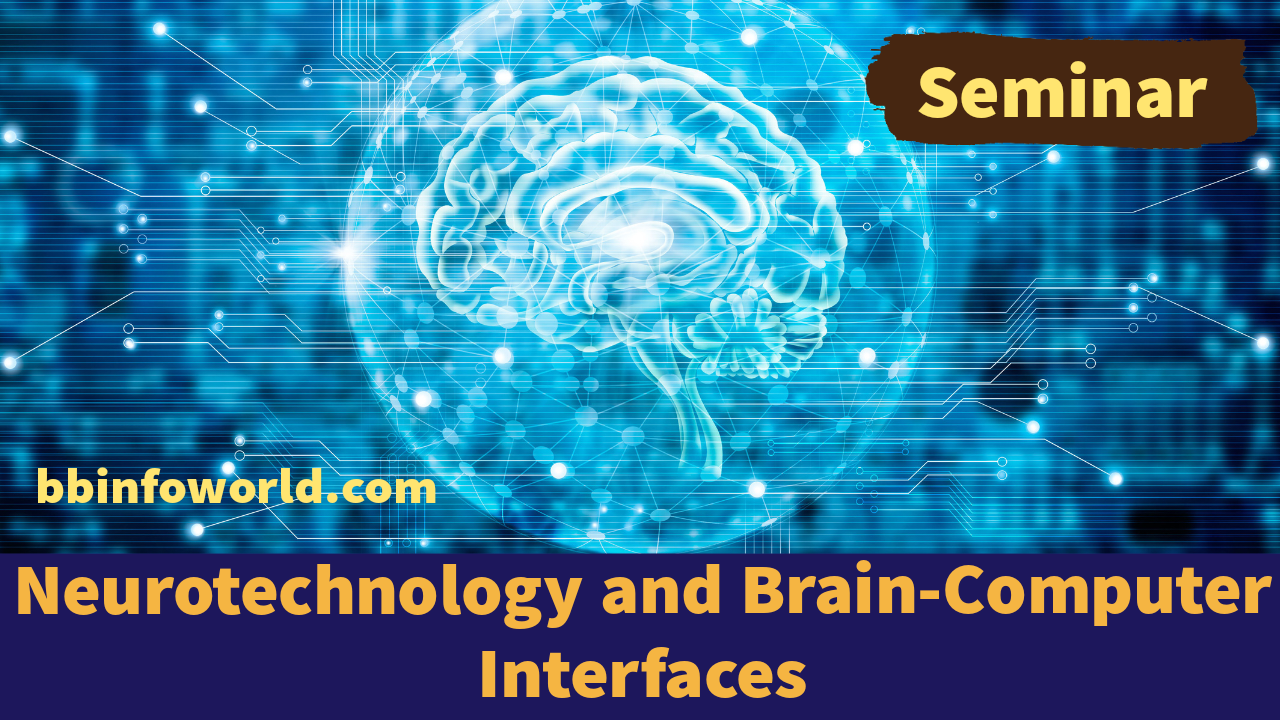
Neurotechnology and Brain-Computer Interfaces
Delve into the field of neurotechnology, focusing on the development of brain-computer interfaces and their potential medical and technological applications.
Introduction:
Neurotechnology represents a groundbreaking intersection of neuroscience, engineering, and computer science, with the goal of interfacing the human brain with technology. At the forefront of this field are Brain-Computer Interfaces (BCIs), which enable direct communication between the brain and external devices. This seminar explores the intricacies of neurotechnology, delving into the working principles of BCIs, their advantages, limitations, and the diverse applications they hold in both medical and technological contexts.
Working Principle:
Brain-Computer Interfaces establish a direct communication link between the brain and external devices. Electrodes placed on the scalp or implanted in the brain record electrical signals generated by neural activity. These signals are then processed and decoded to extract meaningful information. This information can be used to control external devices, such as prosthetic limbs or computer software. The key to successful BCIs lies in the accurate interpretation of neural signals and the development of algorithms to translate them into commands.
Advantages:
- Assistive Technology: BCIs offer a lifeline for individuals with paralysis or severe motor impairments, allowing them to control devices and regain independence.
- Medical Rehabilitation: BCIs can aid in rehabilitating stroke patients or those with neurological disorders by enabling brain-controlled movement exercises.
- Neuroscientific Research: BCIs provide insights into brain functions and neural communication, advancing our understanding of the brain.
- Communication Enhancement: BCIs can restore communication capabilities to individuals who have lost speech or motor function.
- Virtual Reality and Gaming: BCIs enable immersive experiences in virtual environments and gaming by translating neural commands into actions.
Limitations:
- Invasive vs. Non-invasive: Invasive BCIs require surgical implantation, posing risks and ethical considerations.
- Signal Quality: Neural signals can be weak and noisy, making accurate decoding challenging.
- Training Requirements: Users need to undergo training to learn how to control BCIs effectively.
- Limited Applications: BCIs are most effective for specific tasks and may not be suitable for all applications.
Applications:
- Assistive Technology: BCIs enable paralyzed individuals to control robotic arms, communication devices, and even exoskeletons.
- Neurorehabilitation: BCIs aid in restoring motor function and facilitating recovery in stroke patients and those with spinal cord injuries.
- Communication: BCIs allow locked-in patients to communicate through text or speech synthesis.
- Neuroprosthetics: BCIs can control prosthetic limbs, restoring natural movement to amputees.
- Research and Education: BCIs contribute to understanding brain function, neural plasticity, and learning mechanisms.
The evolution of neurotechnology and Brain-Computer Interfaces holds immense promise in transforming lives, revolutionizing medical treatment, and expanding human capabilities. As research and innovation in this field progress, the boundaries of what can be achieved through direct brain-computer communication continue to expand. This seminar provides an in-depth exploration of neurotechnology and BCIs, highlighting their potential to bridge the gap between human cognition and technology.



